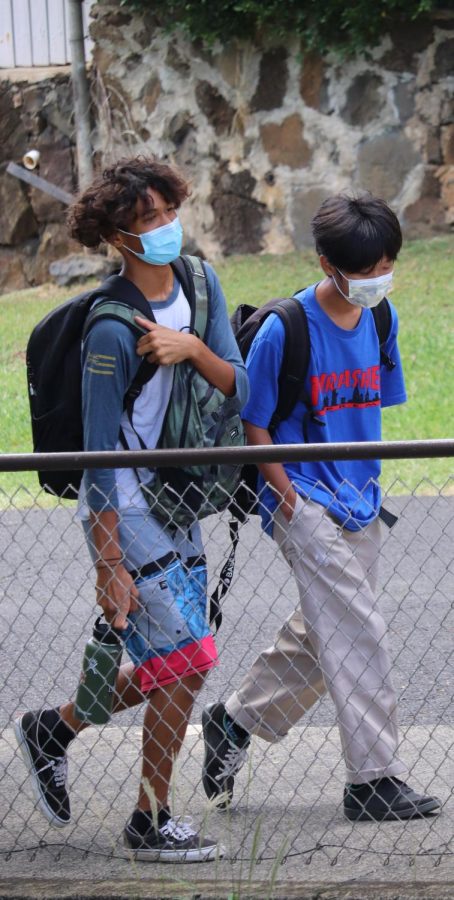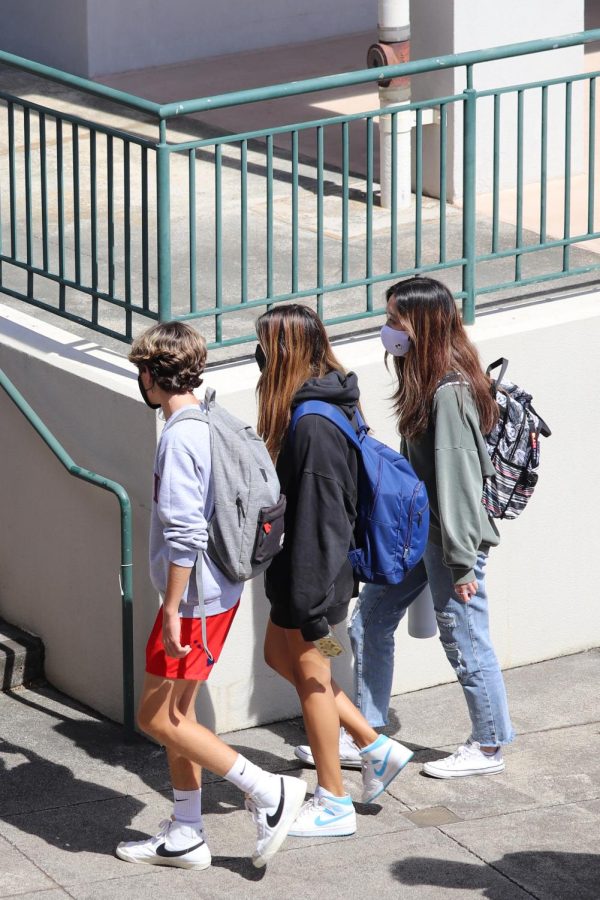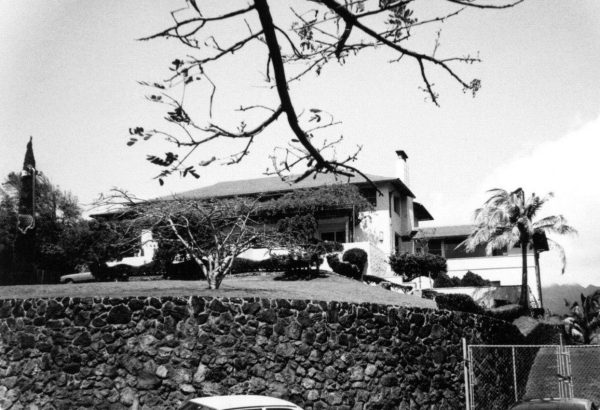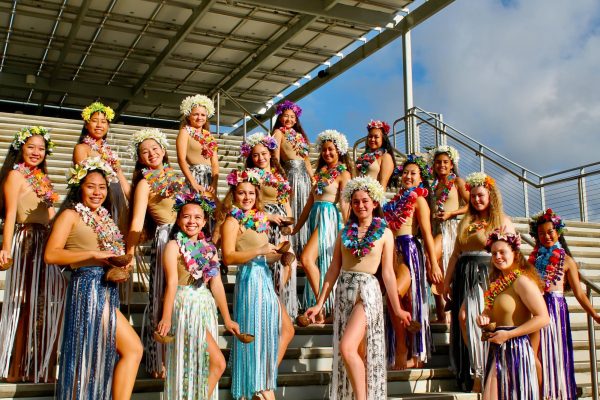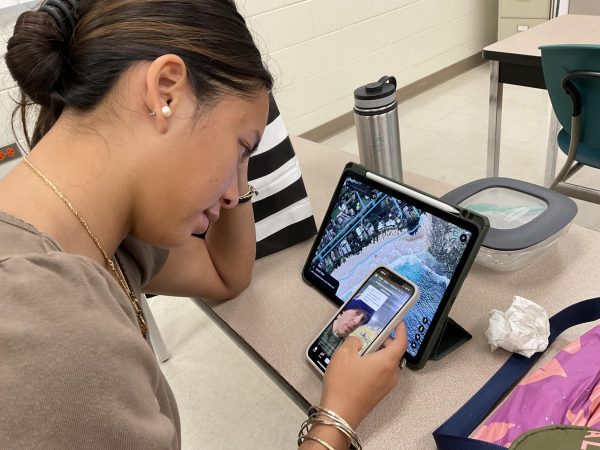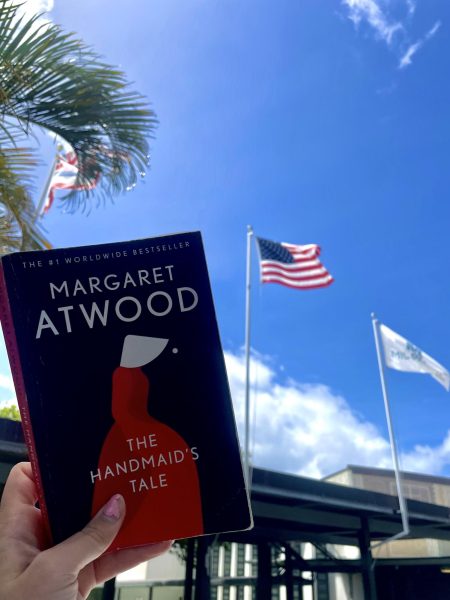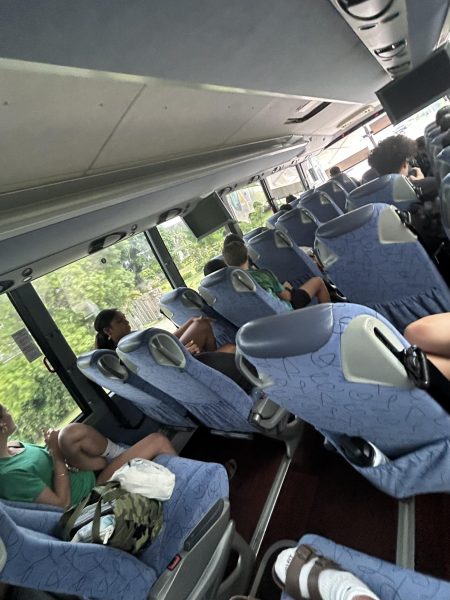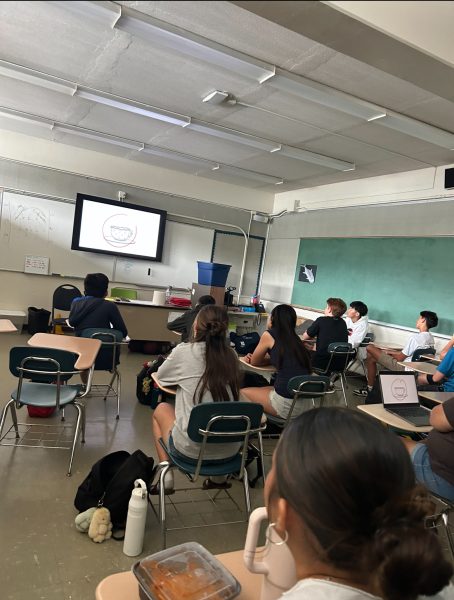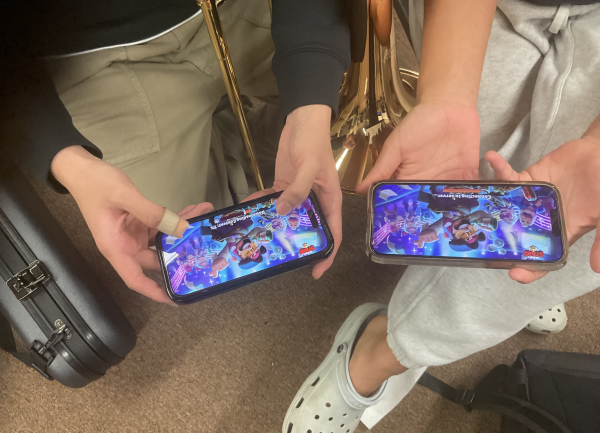Students speak out, calling the new dress code ‘sexist’ and ‘outdated’
Jayden Miao ’25 and Tama Alo ’25 wearing their definition of “professional tops.”
By Archer Liang, Dillon Balantac, and Jamie Hiremath
No skimpy shorts or tops. No slippers. Dress conservatively and look “professional.” Sometimes, dressing for school can feel like getting ready for Sunday church.
Mid-Pacific recently loosened restrictions on the student dress code. The new changes were implemented at the start of this school year and now, students can wear shirts without collars, dye their hair and wear leggings.
Middle and High School Principal Dwayne Priester played a vital role in changing the most recent dress code.
The revisions of the new dress code were aimed to “stray from gender specific language” and “create a more inclusive environment, where students can feel to express their individuality,” said Priester.
But is the new dress code actually gender-neutral and inclusive?
An on-the-street poll taken by 100 Mid-Pacific students conducted by Na Pueo staffers found that 88 percent of participants believe the dress code to be “sexist.” The remaining 12 percent of participants who believed it was not sexist were all male students.
Sections of the newest Mid-Pacific dress code states:
Tops – Tops that reflect a professional student learner appearance may be worn. It must completely cover the torso. This may include but not limited to Mid-Pacific logo polo shirts, Pueo Pride and Mid-Pacific tops that represent a club, team, or the school.
Bottoms – May not be higher than 2” above the knee.
“Completely cover the torso and no higher than two inches above the knee. Who do you think they’re referring to?” asked senior Emi Dubrawski.
The reasoning behind this ruling is not to prevent revealing clothing from “distracting others,” rather to ensure the “standards of appropriateness” are met, explained Priester.
“If I came to school dressed in shorts, slippers and a t-shirt, it would change the way people see me—I would be less of an administrator,” said Priester.
A survey taken by 150 Mid-Pacific students conducted by Na Pueo staffers found that 98 percent of participants don’t care if students wear “revealing” clothing, such as crop tops, spaghetti straps and tube tops.
“The term ‘professional attire’ is outdated and sexist because it does not address each gender equally,” said senior Karlee Tanaka. “Girls get dress-coded for way different things than boys.”
Tanaka struggles with finding attire that is true to her style and fitting for a five minute passing time on a hot day.
“This year, I’ve noticed a lot of teachers, who didn’t care about dress code before, have been calling out female students for the smallest things like showing a little bit of shoulder or stomach,” said Tanaka. “But boys can wear short shorts and lift their shirts up all the way up to ‘cool themselves off,’ while girls have to explain themselves for wearing attire that is just as or less revealing to feel comfortable on a hot day.”
Many students feel that the dress code does not take into account the heat of Hawaii’s weather.
Do we even need a dress code?
“Dress code is a way to show respect for where you are and who you are around,” said Integrated Math III teacher Carolyn Roscoe. “I wish we would practice modesty.”
Like Roscoe, many administrators agree with this conservative view on dressing for an academic setting.
“Mindset is dictated by how you dress. [ . . .] Look presentable, professional, neat and formal,” said Junior Dean Rene Ochiai. “You want to present in a way that people will have confidence in your ability.”
But some students disagree.
“I know some teachers who come to school in jeans and a sweater. I still respect them as teachers and don’t think any less of them because of the way they dress,” said sophomore Maya Copeland. “Being professional is not defined by the way you look.”
For a truly inclusive dress code, one might look at what is not included in the new policy guidelines. The current rules fail to address any ban of hate speech tailored clothing. Under ‘headgear,’ there is no mention of any exception for religious head coverings, such as a hijab or kippah, to be worn indoors.
“It’s assumed,” said Ochiai.
It’s not just about the dress code itself, but rather, how the dress code is enforced.
“Teachers shouldn’t be allowed to confront students about dress-code in a way that publicly shames them,” said junior Charlie Leung. “I’ve seen it done before.”
Like Leung, students are asking the administration to prohibit discriminatory enforcement, as they find it an “unnecessary” and “unfair form of punishment.”
The current dress code, however, is not final. Priester is putting together a committee of students and adults to decide on new standards for a dress code that “truly represents our community.”
“If you claim to have an ‘inclusive’ dress code, then make it inclusive,” said Dubrawski. “Practice what you preach.”

